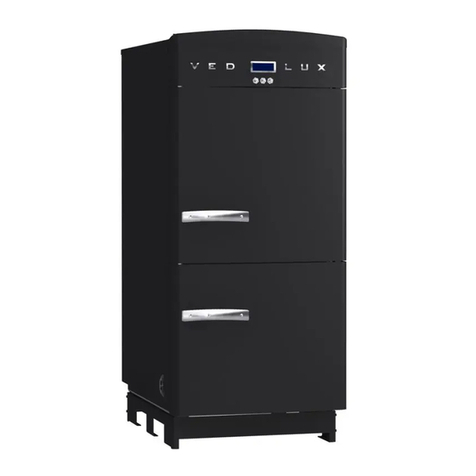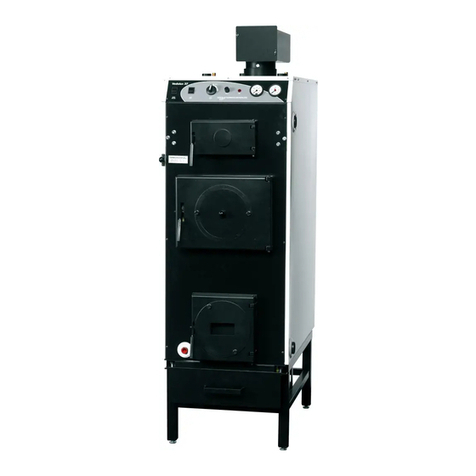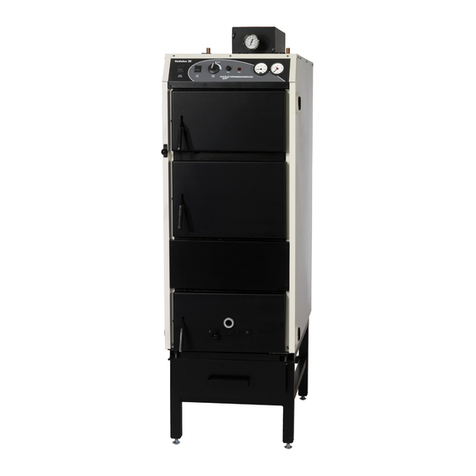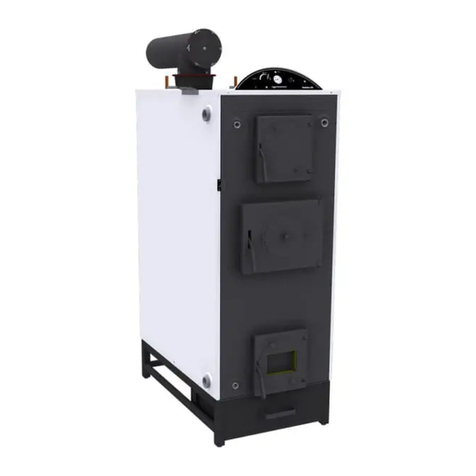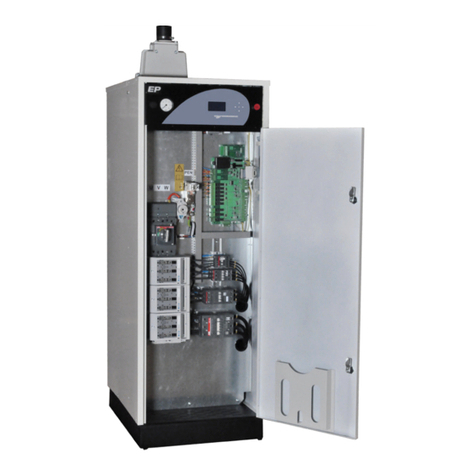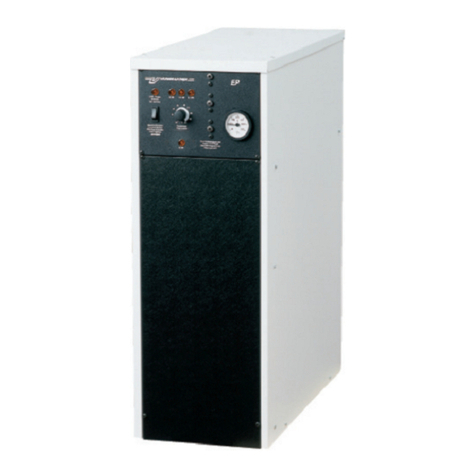
9
Värmebaronen Vedolux 37
Checks
After installation, check with the installer that the system is in
perfect condition.
Ask the installer to demonstrate the settings and functions so
you know how to operate and care for the system.
Checks
Before putting the system into operation, check that:
• the system is filled with water
• all connections are watertight
• flue gas connections to the boiler and to the chimney are tight
• the filling/drain valve has been closed properly.
• the safety valves are working correctly
• the necessary valves are open
• the circulation pump is working and the direction of flow is correct
• the correct temperature has been set on the charge thermostat
Firewood
Firewood as a fuel
Vedolux 37 has a ceramic grate and an afterburning chamber made
of high-temperature resistant stainless steel. The boiler works on the
principle of reverse combustion. If the boiler is correctly operated, it
burns firewood and gases very effectively, with high efficiency and
low environmental impact.
Using firewood as a fuel is not simply about burning the wood – the
techniques used have a decisive effect on the result.
Firewood
Hardwoods generally have a higher energy content than conifers.
However, the most important thing is that the wood must be dry –
moisture content 12-25 %.
If the wood is damp, much of the energy is wasted on drying it out,
combustion is impaired and the risk of tarring increases.
Oak should be well dried, for more than three years, and or mixed
with other wood types to avoid the negative factors of high acidity.
The blocks of wood must be the correct size for the combustion
chamber, around 20 in. long and around 6 in. wide, allowing three
blocks to fit the width of the grate.
To allow the wood to dry out, the tree should be felled at least one
season in advance. An alternative method is to fell the tree in spring
just after the leaves have come out, then wait a few weeks before
trimming and splitting the wood. During these weeks, the leaves wilt
and draw out the moisture. After another few weeks of drying, the
wood has 25-30 % moisture content.
After cutting, the wood must be split. The more it is split, the faster
and easier it will dry. If logs are difficult to split, the bark can be
stripped to speed up drying. Fresh wood is easiest to split.
The wood should not be in direct contact with the ground, as this
causes the wood to take on moisture instead of drying out. Ideally
the wood should be kept under a roof but in a place where the sun
and wind can help dry it. The best place for final drying is the boiler
room, for 2-3 weeks before the wood is used. The moisture content
after drying is around 20 %.
Heat content
The heat content is the amount of heat that can be extracted by the
boiler and transferred to the boiler water. Heat content should not be
confused with energy content, which increases with the size of the
block of wood. The heat content increases with the dryness of the
block of wood, because less heat is wasted on drying the wood.
Newly cut wood has a moisture content of around 55 %. Firewood
that has been dried out following our instructions has around 20 %
moisture.
8000
7000
6000
5000
4000
3000
010 20 30 40 50
Btu/lb
% moisture
content
The chart illustrates how the heat content changes.
If a building uses 880 ft3of newly cut firewood (55 % moisture),
around 495 ft3of water needs to be dried through the chimney. In
other words, the energy needed to vaporize 3700 gal is wasted.
Other problems using damp wood include poor combustion and dirty
emissions, which in turn impair efficiency.
First burning cycle
In the first burning cycle, or if the boiler has not been used for a
while, it is important to just light a small fire. The ceramic parts of
the boiler may contain moisture, which must be vaporized slowly so
as not to crack the ceramic. Once the ceramic parts are dry, you can
light a full-size fire. The ceramic does not take on moisture when the
boiler is being used. See “Operation and care”.
This heater is designed to burn natural wood only. Higher efficiencies
and lower emissions generally result when burning air dried sea-
soned hardwoods, as compared to softwoods or to green or freshly
cut hardwoods.
DO NOT BURN:
(1) Garbage;
(2) Lawn clippings or yard waste;
(3) Materials containing rubber, including tires;
(4) Materials containing plastic;
(5) Waste petroleum products, paints or paint thinners, or asphalt
products;
(6) Materials containing asbestos;
(7) Construction or demolition debris;
(8) Railroad ties or pressure-treated wood;
(9) Manure or animal remains;
(10) Salt water driftwood or other previously salt water saturated
materials;
(11) Unseasoned wood; or
(12) Paper products, cardboard, plywood, or particleboard. The pro-
hibition against burning these materials does not prohibit the use of
fire starters made from paper, cardboard, saw dust, wax and similar
substances for the purpose of starting a fire in an affected wood
heater. Burning these materials may result in release of toxic fumes
or render the heater ineffective and cause smoke.’’
